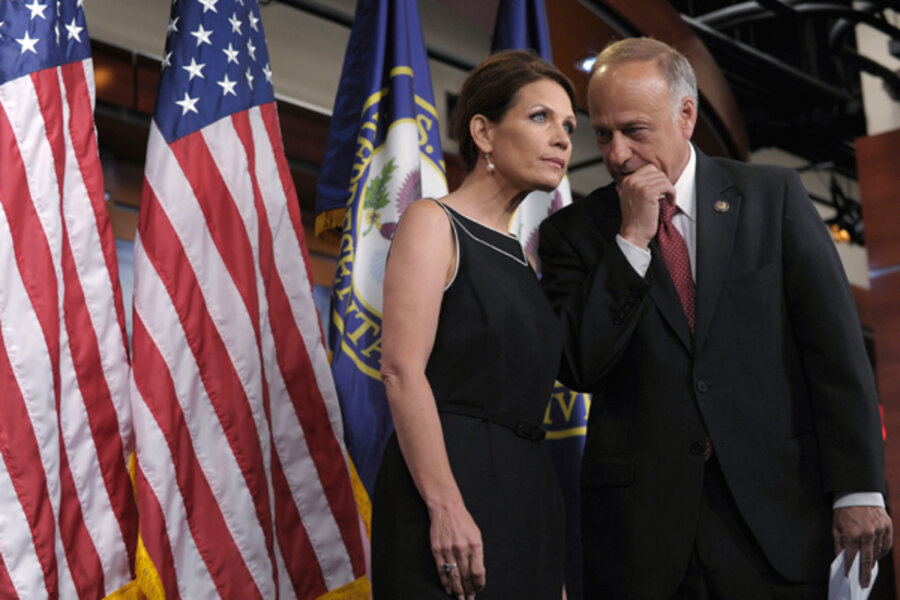This option entails planning for default. If the US Treasury cannot borrow more money because it has hit the debt ceiling, then it cannot pay its bills.
Tea party conservatives are in the forefront of planning for default. They have been the most vociferous about not ceding ground on revenue increases, so they want to ensure there is a fallback plan that avoids a full default or that mitigates the effects.
Sen. Pat Toomey (R) of Pennsylvania and Rep. Tom McClintock (R) of California are proposing legislation to require the Treasury to pay interest owed on the national debt before any other government expenditures. Their measure, which as of July 14 had the backing of 98 House Republicans and 22 GOP senators, is a template for similar moves to protect certain groups from the impact of default.
Reps. Steve King (R) of Iowa, Louie Gohmert (R) of Texas, and Michele Bachmann (R) of Minnesota – who have strong tea party ties – on July 13 introduced legislation to ensure that those serving in the US military get paid first, then debt holders.
“If we want to see the bond markets hold up, if we want to see our national credit hold up, then we need to pay and service our debts,” said Representative King. “We pay our military first because they’re the ones that protect the security and liberty of the American people.”
Critics say there are limits to managing 800 million monthly payments when government revenues cover only about 60 percent of its expenses. “The reality would be chaotic,” concludes a report by the Bipartisan Policy Center in Washington. “Unfair results, unanswered questions, the Treasury picking winners and losers, a public uproar.”
For example, on Aug. 3, the Treasury expects $12 billion in revenues will be available to cover $32 billion in spending commitments. These include a $23 billion Social Security payment, $1.4 billion for defense vendors, and $2.2 billion for Medicare and Medicaid, according to the Bipartisan Policy Center report.
“As Secretary Geithner reminded us, there’s no way to prioritize payments that makes default any less of a calamity,” said Sen. Charles Schumer (D) of New York on July 14, after a caucus luncheon with the Treasury secretary.
Federal Reserve Chairman Ben Bernanke told lawmakers on July 13 that the Fed has “thought about making preparations” in case the US hits its borrowing, but that the facts on the ground are implacable.
“The revenue that we get in from taxes is both irregular and much less than the current rate of spending,” he said. Even if the US doesn’t miss any payments on its debt after Aug. 2, “it’s possible that simply defaulting on our obligations to citizens might be enough to create a downgrade in credit ratings and higher interest rates for us, which would be counterproductive, of course, since it makes the deficit worse.”





